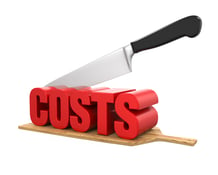So you want to start a restaurant? Welcome to the beginning of your newest journey into hospitality. There are a lot of steps when it comes to launching a successful restaurant. We’ve got an easy checklist for you to follow as your new bar, eatery, food truck or cafe comes to life.
Nail down your concept
This may sound like a no-brainer but before you start your restaurant, you need to establish exactly what it is you want to do. Here are a few things to clearly defined for your restaurant:
Concept: This is the basics of what your restaurant is. What type of food are you serving? What is the ambiance and the service style? As you’re mapping out your concept make sure to think of how your restaurant differentiates from the pack.
Brand: Your brand is how you present your restaurant to the public. Some of this is intangible and based around how you want your customers to perceive you. Think about in terms of what your restaurant is and is not. How would you define the feeling you want people to get form it? 86% of consumers say that authenticity is important in a brand. Try not to focus on what others are doing and instead, speak your truth.
But then there is also the more tangible side of your brand like your restaurant’s logo. This will be the symbol that is associated with your restaurants. You can work with a graphic designer to create, or if you are on a budget there are free tools out there to create your own.
Mission: Having a mission takes your concept and brand and puts meaning behind it. There are plenty of resources that can guide you through writing a mission statement, but the key thing to focus on is the “why”. What is the purpose of your restaurant and why was it so important for you to start it.
It helps to work these things out on paper. Have a document or folder where you keep all information related to your restaurant concept and brand. There will be many times throughout this process where you may not know what the best next step forward is. Having a firm grip on your concept and vision for your restaurant is a priceless tool that will help keep you on track.
Write a business plan
Okay, so you know what type of restaurant you want to open, now you have to put it into action. That’s where a business plan comes in. Think of this as a document to help you flesh out your restaurant strategy, but also a crucial tool for acquiring potential investment in your restaurant. Studies have found that putting a business plan together doubles the chances of your business’ success. Here is what it should include:
Executive Summary: A short summary or introduction to your restaurant.
Company Overview and Description: This is where you get into more detail about your restaurant. You’ll want to include things like your background in hospitality, why you want to open this restaurant, where your restaurant will be located, etc. It’s also a great place to include your mission statement.
Market Analysis: This requires some research but you’ll need to present comprehensive information on who your potential customers and competitors are. Analysis should also highlight why there is a need for your restaurant in the market.
Business Offerings: What will your restaurant be offering in terms of food, ambiance, and services (things you outlined in your concept!)
Management Summary: This portion gets into the structure of your restaurant, how it’s going to be managed and who those key players will be on your team.
Marketing and Public Relations Strategies: How are you going to get the word out about a restaurant? Are you working with an outside PR firm? Do you have a marketing launch strategy? This is where you can add this info.
Financial Projection: A forecast of your future revenue and expenses.
If you are making a business plan for the first time, don’t be afraid to ask peers for feedback or seek out other examples. This is what you will present to banks or investment firms so you’ll want it polished. If you are exclusively approaching investors for fundings, consider putting your restaurant business plan into a pitch deck or slide format for easy review.
Make a budget
If you want a path to profitability and success, you need to make a budget for your restaurant that gives a clear view of your potential profits and losses (P&Ls). Here are some key figures for you to calculate for a well-rounded budget:
Projected Sales: The amount of revenue you predict for your restaurant
Prime Costs: Your full operating costs including inventory, staffing, etc.
Controllable Income: These are consistent costs associated with utilities, paid marketing efforts, maintenance, etc.
Net Income: What you have left of your projected sales after expenses from prime costs and controllable income are paid. You need your net income to be positive in order to turn a profit. If your net income is not where you want it to be then you need to address your spending budget.
Remember, your budget is not a set number. After your restaurant opens you may find you need to adjust it to obtain profitability, or reevaluate your food cost percentage and menu pricing to increase potential revenue. Be vigilant and flexible.
Find suppliers
Another way to adjust your budget is by finding a good food supplier. There are many different purveyors out there that specialize in different food categories. Whether you are looking for local, organic, wholesale, meat or seafood suppliers, the best thing to do is your research. Shop around to find the best prices for the best quality. For more detail on this step, check out our restaurant food supplier guide.
Acquire permits and licenses
Do not--we repeat--DO NOT forget about your permits and licenses. These are the government issued permissions are what allow your restaurant in essence to exist and to serve. They range from licenses to construct, sell alcohol, host live music, etc. Without them, your restaurant can and will be shut down. Licenses are handled by the state and city level, so be sure to check what you need locally before breaking ground or opening. If you are not sure, seek out legal counsel for guidance.
Pick a POS system
There is a lot of tech you need to consider when starting a new restaurant, but none is probably more important than the Point of Sale (POS) system you choose. A POS serves as the central hub for all transactions made within your restaurant. They can help you do everything from monitoring sales to managing staff, to tracking inventory. Aside from the ability to process payments and offer robust reporting, make sure your POS is user friendly to both you and your staff.
Hire staff
Last, but not least, you have to hire a solid opening crew. Restaurants are notorious for having a high turnover rate. In fact, in 2018 the average turn over rate was about 75%. In order to minimize retraining and rehiring stick to these tactics:
Pull out that mission statement you worked on before. Make sure to ask questions to affirm that the candidate is excited about your vision. They’ll bring that passion to work with them.
Have different interview questions for every hire. Remember, what you’ll need in a server is different than what you will need in a sous chef.
Widen your net for your hiring by reaching out to your existing hospitality network. Your industry colleagues probably have people they can recommend and already know what these positions need.
Do a soft opening. Since you’re opening a new restaurant with a new crew, do a soft opening, friends and family night. It will give you a chance to run through a practices service shift, work out all the kinks and collect staff feedback before the grand opening!
[Photo: Andrew Seaman on Unsplash]





